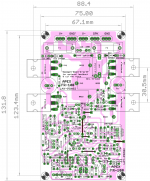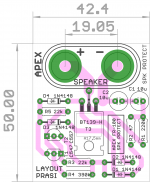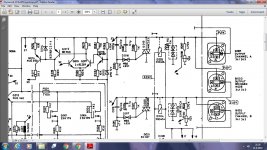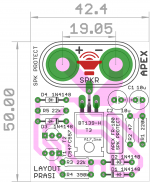The output coil with it's damping resistor is better installed in the cable from Amplifier PCB to chassis mounted Output Terminals.question guys, this design does not need a output L1 coil right ?
Regards
Juan
question guys, this design does not need a output L1 coil right ?
Regards
Juan
Go to post #43
Regards
Go to post #43
Regards
Mr. Mile, is my implementation of zobel and inductor on PCB itself as per post 2185 http://www.diyaudio.com/forums/solid-state/173462-studio-reference-amplifier-219.html#post4833070 ok or not ok?
reg
Prasi
Last edited:
Mr. Mile, is my implementation of zobel and inductor on PCB itself as per post 2185 http://www.diyaudio.com/forums/solid-state/173462-studio-reference-amplifier-219.html#post4833070 ok or not ok?
reg
Prasi
It is OK, you can add DC protect from post #2149 on speaker terminal.
Regards
Here are the DIY files for those who want to build (all pdf views from component side) and also gerbers. i/p coupling cap has an option of either an a NP or a film cap of 15mm pitch like epcos 10uF 63V.
just a note; some board houses, even for a single sided board, will trim the 'silk' on top layer that's directly above the pad. e.g., XRK / BanglaH PCB from the 'very simple quasi complimentary amplifier' thread. doesnt affect the pcb working in anyway.
regards
prasi
just a note; some board houses, even for a single sided board, will trim the 'silk' on top layer that's directly above the pad. e.g., XRK / BanglaH PCB from the 'very simple quasi complimentary amplifier' thread. doesnt affect the pcb working in anyway.
regards
prasi
Attachments
Last edited:
Here are the DIY files for those who want to build (all pdf views from component side) and also gerbers. i/p coupling cap has an option of either an a NP or a film cap of 15mm pitch like epcos 10uF 63V.
just a note; some board houses, even for a single sided board, will trim the 'silk' on top layer that's directly above the pad. e.g., XRK / BanglaH PCB from the 'very simple quasi complimentary amplifier' thread. doesnt affect the pcb working in anyway.
regards
prasi
Nice work , thank you for your contribution.
Regards
Nice work , thank you for your contribution.
Regards
Thanks Mr. Mile, I made a layout for your SR speaker protect. Is it ok?
reg
Prasi
Attachments
Thanks Mr. Mile, I made a layout for your SR speaker protect. Is it ok?
reg
Prasi
Is there a schematic for this circuit?
#2149Is there a schematic for this circuit?
Nice work Prasi. This will be Very Useful.Thanks Mr. Mile, I made a layout for your SR speaker protect. Is it ok?
reg
Prasi
How does this circuit work? Does it short the output of the amp? Can it really handle 50-100VDC as a direct short? For how long?
Mr. Mile has a similar ckt in post http://www.diyaudio.com/forums/solid-state/173462-studio-reference-amplifier-5.html#post2317977 #43. I believe this is called as crowbar protection (like dropping a crowbar across the o/p) and looking at the datasheet of BT139, seems its more than capable as it only needs to carry till fuse blows. fuse is a must here ...
I wonder how the output transistors like this circuit. I think I will stick with the protection circuit that opens the output.
They don't like it, for sure. Another question, that they are usually dead if we have DC output...
Sajti
I wonder how the output transistors like this circuit. I think I will stick with the protection circuit that opens the output.
50-100V DC on amp out can weld relay contacts and speakers will blow. With triac speakers are safe... some PA amplifiers use both protect.
Attachments
just to put it clearly for anyone reading, this protect is transparent to o/p stage as it is directly connected to amp o/p. In event of o/p stage failure (with DC>10V), this will short the speaker leading to fuse blow. Very useful if one wants to protect expensive speakers.
Yes, amp will RIP anyway .
.
While building a case, this ckt is the last one to go in after all initial tests are over and amp is working fine.
or like Mr. Mile said, one can have it in speaker box.
Yes, amp will RIP anyway
While building a case, this ckt is the last one to go in after all initial tests are over and amp is working fine.
or like Mr. Mile said, one can have it in speaker box.
Last edited:
just to put it clearly for anyone reading, this protect is transparent to o/p stage as it is directly connected to amp o/p. In event of o/p stage failure (with DC>10V), this will short the speaker leading to fuse blow. Very useful if one wants to protect expensive speakers.
Yes, amp will RIP anyway.
While building a case, this ckt is the last one to go in after all initial tests are over and amp is working fine.
or like Mr. Mile said, one can have it in speaker box.
Diy file
Attachments
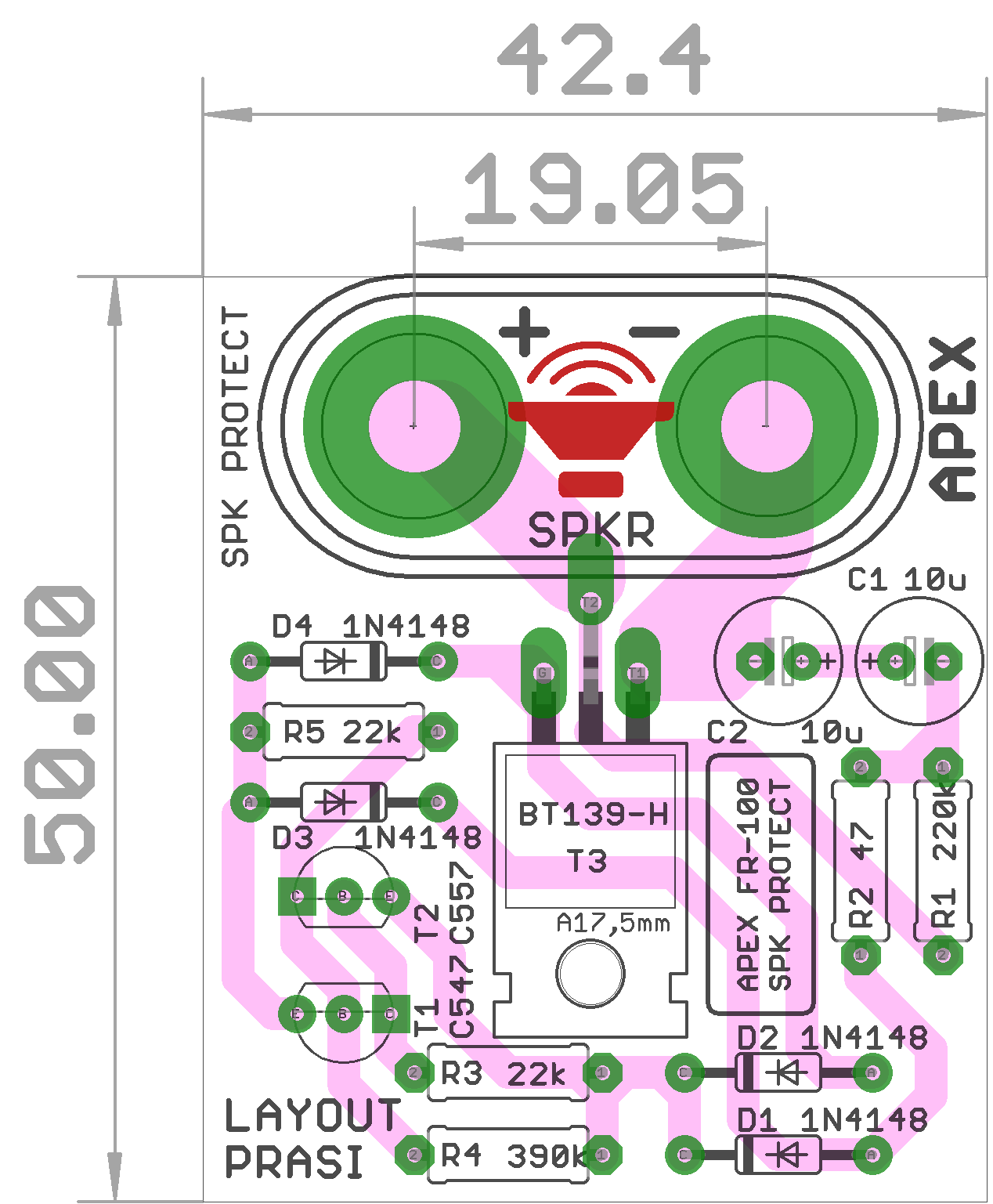
Prasi,
Thanks for making this (and thanks to Apex for designing it). It is unique in speaker DC protects as it is an active circuit but is passive in that it is self-powered by the speaker cable and can mount at speaker terminals. Very cool.
One idea is that the fuse could be placed in series here and will be the first to blow rather than letting amp's fuse blow which might subject amp's circuitry to additional stress.
Last edited:
Prasi,
Thanks for making this (and thanks to Apex for designing it). It is unique in speaker DC protects as it is an active circuit but is passive in that it is self-powered by the speaker cable and can mount at speaker terminals. Very cool.
One idea is that the fuse could be placed in series here and will be the first to blow rather than letting amp's fuse blow which might subject amp's circuitry to additional stress.
Thanks X. Regarding fuse, in fact it is better to have fuse on amp itself (or furthest away ) as supply to the amp itself is cut-off, removing its 'stress'. if fuse is placed on the protect and it blows, electricity will still be flowing in amp and will do further damage depending upon nature of fault.
- Home
- Amplifiers
- Solid State
- Studio Reference Amplifier
